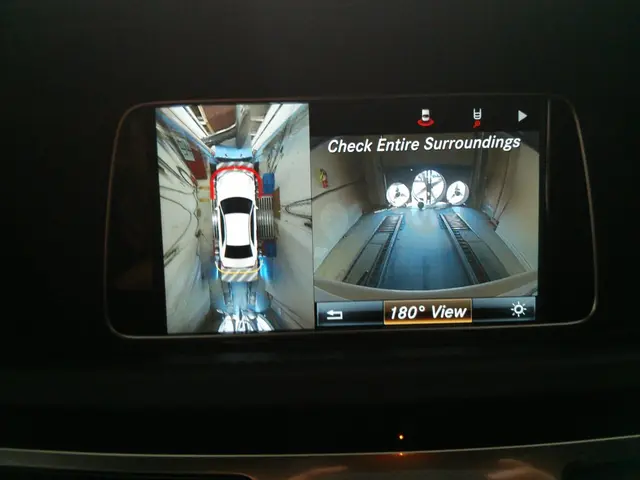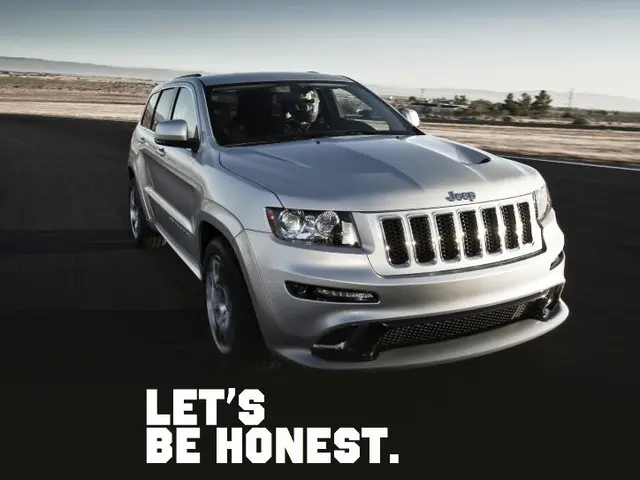Latest Electric Vehicles Slated for Australian Debut in 2024
There's a buzz brewing in the Australian automotive scene as we gear up for a tsunami of electric vehicles (EVs) set to hit our shores in 2024. Tesla, BYD, Toyota, and more major players are stepping onto the drama-filled stage.
From a scant few options a few years ago to a whopping 50 now, the variety for Aussie electric car buyers is rapidly on the rise. Let's dive into some of the most eagerly awaited EVs setting sail for our beautiful land down under.
A Glimpse into the Future: Top EVs Heading Our Way
The BYD Seal U: A Contender for the Tesla Model Y
Set to land somewhere in March or April 2024, the Toyota RAV4 hybrid rival from BYD will make its debut as a petrol-electric plug-in hybrid vehicle. Interestingly, an all-electric version is rumored to follow suit. If it does, this model might just serve as a logical competitor for the coveted Tesla Model Y.
As of now, the name for this new arrival isn't set in stone; it may be the BYD Seal U, or another moniker yet to be chosen. In China, it's known as the Song Plus Champion Edition, but that's unlikely to be the tag it wears on Australian shores.
The BYD Seal U is a sizeable vehicle, measuring 4785mm long, 1890mm wide, and 1660mm tall, outdoing the Toyota RAV4 in length but not in height.
In PHEV form, the BYD Seal U boasts a combined output of approximately 200kW, thanks to its 1.5-litre petrol engine and e-motor. In electric-only mode, it can travel up to 150km. As an EV, it launched in Europe with a 168kW single e-motor, but a dual motor option is upcoming, promising a range of up to 500km. Pricing details have yet to be released, but expect BYD to keep things competitive, just as they've done with the Seal sedan.
A Second Helping from BYD: The Electric Ute
A brand-new, all-electric dual cab ute from BYD is next on the horizon. At the moment, an official name is still up in the air. Much like the Seal U, this model will initially hit our roads as a PHEV in late 2024, with the EV version arriving approximately 12 months later.
An example of the PHEV model has already docked in Australian waters, undergoing testing by local engineers to maximize key attributes that Aussie ute buyers appreciate, such as a strong payload and braked towing capacity.
Combining a 1.5-litre turbo-petrol engine with dual e-motors, this ute promises up to 100km of pure electric running. With both battery and fuel tank full, it could potentially cover up to 1000km. Pricing remains a mystery, but the local importer is talking a big game, promising to undercut established heavyweights like the Toyota HiLux and Ford Ranger.
Jeep Avenger: A Brave New Direction for the American Off-Road Brand
Jeep's first-ever battery electric vehicle, the Avenger, takes a bold step in a different direction. Availed in the second half of 2024, the compact SUV is about the same size as the Mazda CX-3 and solely propelled by a single e-motor. So, forget about conquering rocky terrain; the Jeep Avenger is all about navigating urban challenges like congested roads and crowded parking lots.
Many details are still under wraps, but we do know that Jeep claims a range of around 400km for the Avenger, and the ability to DC fast charge up to 100kW. Pricing details have yet to be disclosed.
Hyundai Kona EV: A Second Generation Built for Electric Power
Slated to hit showrooms around late November, the second generation of the popular Hyundai Kona Electric compact SUV will join a comprehensive Kona lineup that already includes petrol-powered models and a forthcoming hybrid. This time around, Hyundai developed the Kona specifically for electric power, flipping the traditional approach on its head to produce a better car.
While much remains unconfirmed, we do know there will be two powertrains and two battery choices, with the larger one offering approximately 500km of claimed range between recharges. The Kona Electric's new and improved size promises to make it a genuine family car.
Kia EV5: A Medium SUV Set to Take on the Tesla Model Y
With the EV9 large SUV in the pipeline and the EV6 already making waves, Kia is fast becoming a force to be reckoned with in the electric EV scene. The medium five-seat EV5 is next on the calendar, scheduled to debut in 2024 (Kia is being mum on the exact timing at the moment).
Anticipated to start in the $60,000 bracket, the EV5 will go head to head with the Tesla Model Y, as well as other contenders like the Hyundai Ioniq 5, Tesla bZ4X, and Volkswagen ID.4.
The entry-level EV5 will be front-wheel drive, single e-motor, and offer a range of around 530km. The dual-motor version will be more powerful but will sport a range roughly 10% shorter.
Styled in a traditional upright SUV style, the EV5 will be built in China for the Australian market, just like the Tesla Model Y and Polestar 2. It will boast LFP batteries, which are cheaper to manufacture than traditional NMC.
MG Cyberster: A Spectacular Blend of the Old and the New
Back in the day, MG was a British brand primarily known for small two-door sports cars. These days, it's a Chinese brand that focuses on SUVs and small passenger cars, with an increasing number of them electric.
In late 2024, the MG Cyberster convertible sportscar will make its way to our shores. This model is expected to produce 400kW from its dual e-motor setup and sprint from 0-100km/h in just 2.6 seconds, putting it in Porsche Taycan performance territory. Pricing is estimated to be around $100,000, providing excellent value for money.
Nissan Ariya: The Mid-Size SUV With a Long Wait
The Nissan Ariya has long been teased as an upcoming EV, but 2024 now seems like its arrival date. The delay has been attributed to international demand and local homologation requirements. Now it seems that Nissan Australia is holding off for a mid-life facelift that's due in the not-too-distant future.
Measuring just under 4.6m long, the Ariya sports a five-seat SUV design with two front-wheel drive and one all-wheel drive powertrain choices. Its range capacity is claimed to be up to 536km. Pricing remains uncertain, but it will likely fall in the $60,000-$70,000 range, squaring off against the Tesla Model Y, Hyundai Ioniq 5, and other newcomers like the Kia EV5.
Polestar 4: Set to Steal the Spotlight from the Polestar 2
While the Polestar 3 is expected to land in mid-2024, the Polestar 4's arrival soon after will likely replace the Polestar 2 as Swedish-Chinese startup Polestar's most popular model both in Australia and globally.
Sleek and stylish, the mid-size SUV is expected to carry a starting price in the $80,000-$90,000 range, putting it up against top-tier Tesla Model Y variants and luxury rivals like the BMW iX3 and Audi Q4 e-tron.
The Polestar 4 will offer a choice of single or dual-motor drivetrains powered by a large 102kWh lithium-ion battery. The claimed range is as high as 600km.
Tesla Model 3: The Anticipated Update for 2024
The eagerly awaited 2024 Tesla Model 3 update is set to touch down in early 2024, retaining the current version's essential features while adding some improvements in styling, mechanics, and technology. The Model 3 Performance model is not part of the updated line-up at this time.
The slippery new body boosts the range of both the single-motor base model and the dual-motor Long Range variants. Ride has been enhanced, and cabin quietness has been improved through better soundproofing and the use of acoustic glass.
Inside, a 15.4-inch touchscreen now serves as the command center for infotainment, operated by an all-new operating system. There are no stalks for gear or indicators; instead, buttons take on those duties. Back-seat passengers get an 8.0-inch display, allowing them to adjust climate control and entertainment options.
Expect many of these changes to trickle down to the Tesla Model Y, although this might not happen until 2025. Both new models will be pricier, but you can always keep an eye on the Tesla website, as prices often change regularly.
Toyota bZ4X: An Anticipated Arrival from Toyota
The much-anticipated Toyota bZ4X, long on our wishlist, is finally set to launch in February 2024. This medium SUV holds significant importance because it comes from the brand that reigns supreme in the Australian new car market.
However, don't expect this EV to turn heads with cutting-edge tech or blazing performance. While we will receive an update (as part of the reason for the long wait), it won't be anything too radical. Key figures like powertrain, battery size, and claimed range of up to 516km are expected to remain familiar.
The prices we're still waiting for eagerly will span at least two variants vying for a position against the Tesla Model Y, with a starting point likely around $65,400 at the time of writing.
Catch up on the latest information about buying, owning, and charging electric vehicles by browsing through our website!
- The variety of electric cars for Australian buyers is rapidly increasing, with over 50 options now available compared to just a few years ago.
- In the Australian automotive industry, finance plays a crucial role in the adoption of electric vehicles (EVs), as pricing details for upcoming models such as the BYD Seal U and Kia EV5 are still unknown.
- The transportation sector is undergoing a significant transformation, with electric-vehicles like the Tesla Model Y, Toyota bZ4X, and MG Cyberster set to launch in 2024, impacting lifestyle choices and habits of car buyers in Australia.
- Technology advancements, particularly in the automotive sector, will continue to be a key focus in the coming years, influencing the arrival of electric-vehicles like the Jeep Avenger, Hyundai Kona EV, and Polestar 4, each aimed at competing with established rivals like the Tesla Model Y.








